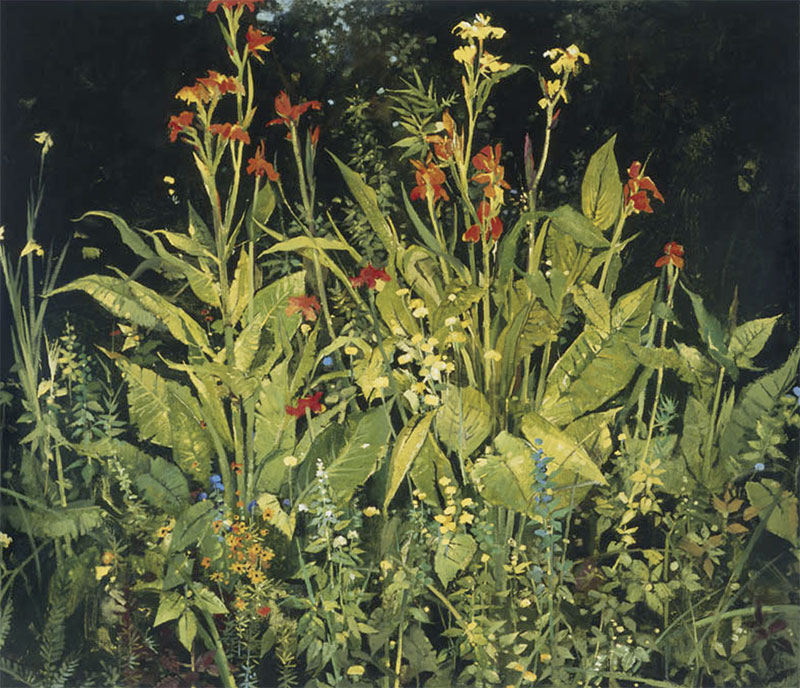Public Art on Campus - John Alexander
ART ON CAMPUS
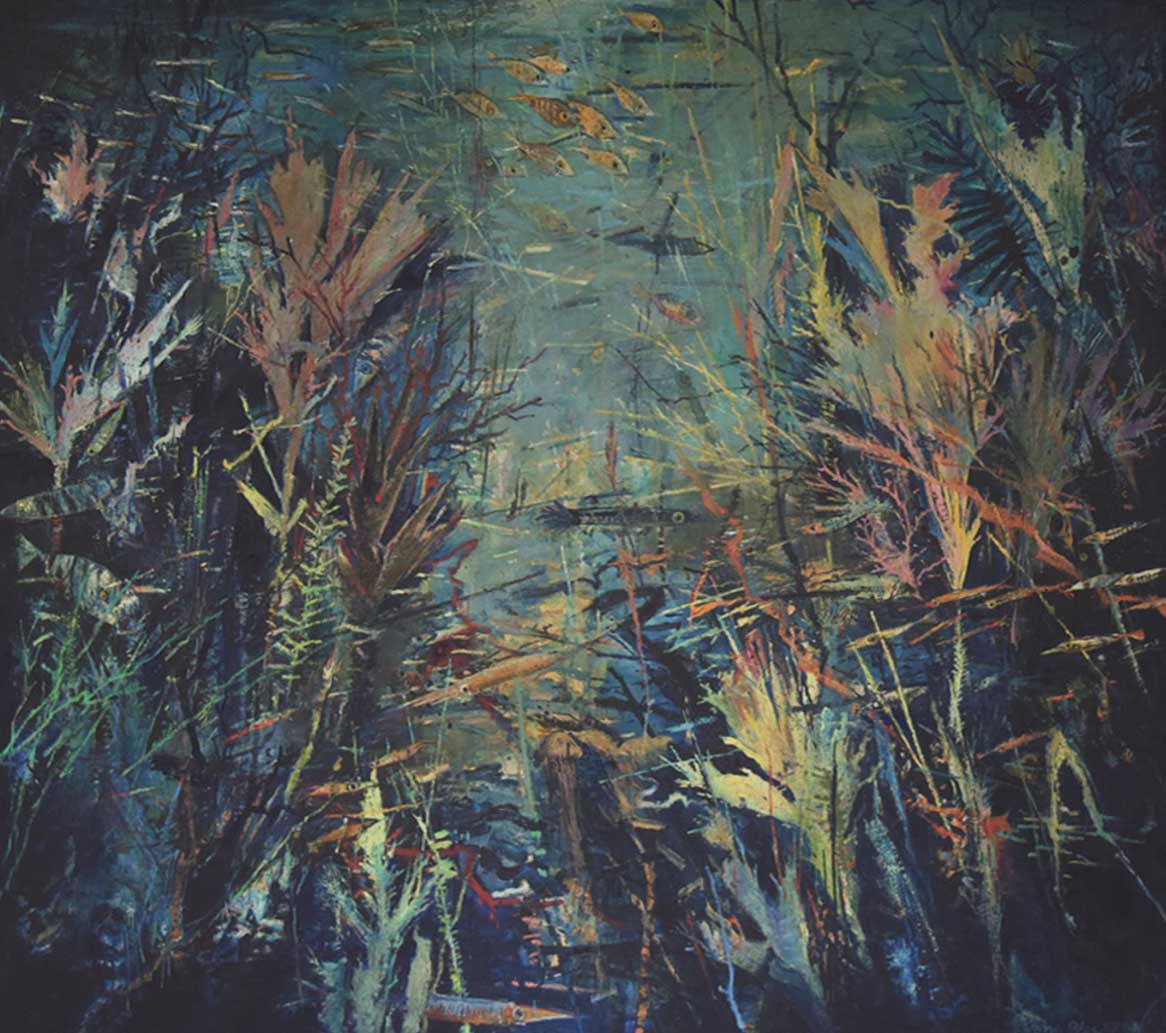
Davy Jones Locker
Year: 1987Medium: Oil on Canvas
Location: Rudy Williams Bldg, John Gray Center, Ste. 122
Gift of Mr. and Mrs. Douglas Stuart.
This massive 90” x 100” expressionistic painting, filled with an assortment of fish, sea grasses and a skull, is the largest of several undersea works Alexander painted in the late 1980s. The Smithsonian has one of the others.
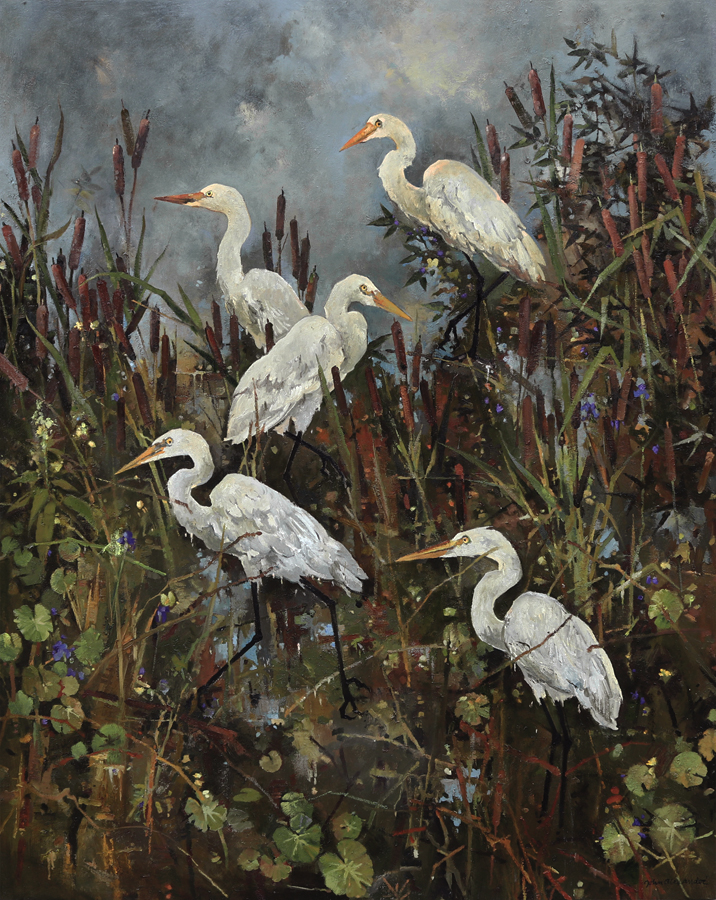
Searching for Evangeline
Year: 2018Medium: Oil on Canvas
Location: Science and Technology Building North Lobby
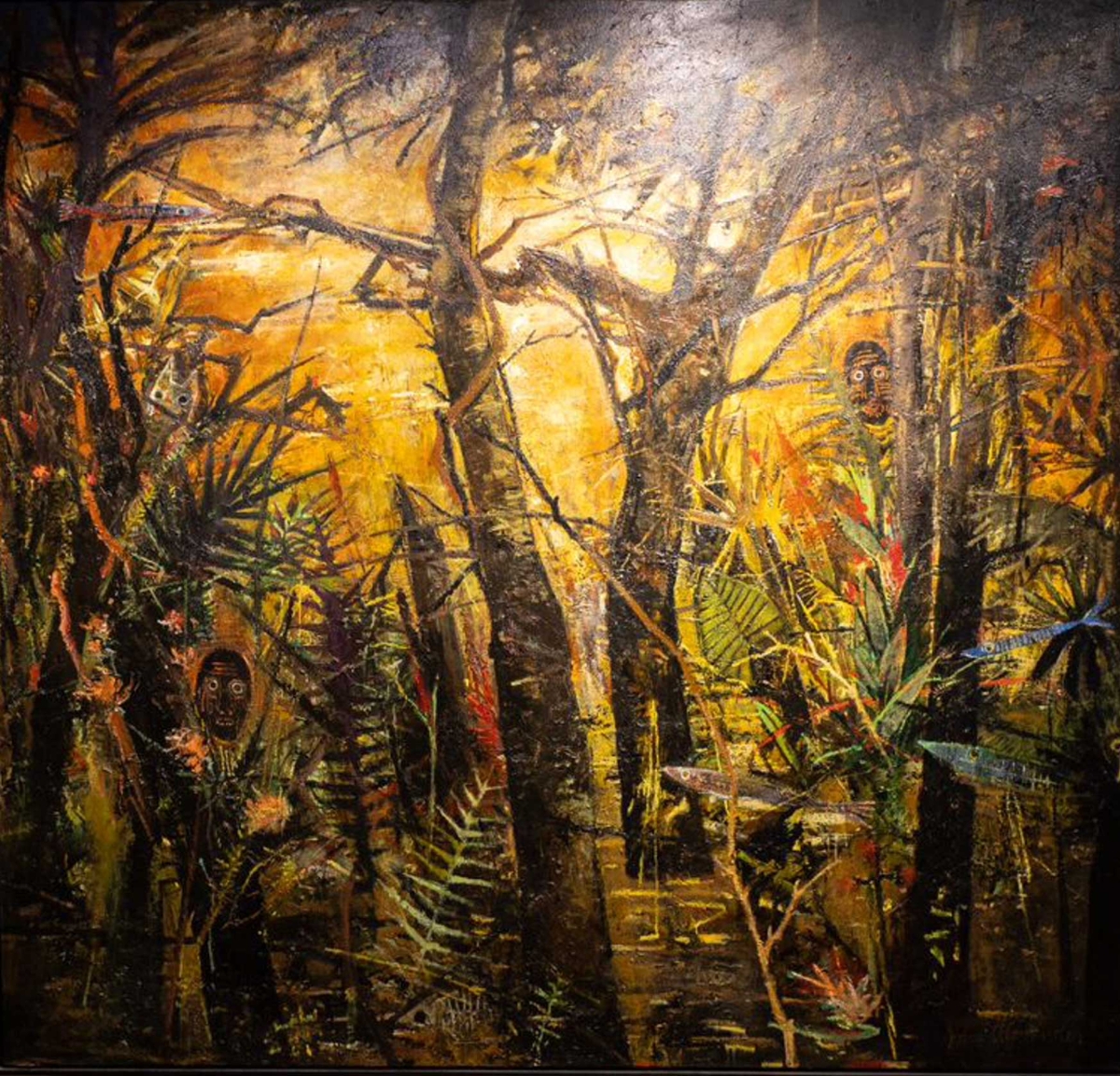
Waiting for Gadot
Year: 1987Medium: Oil on Canvas
Location: Rudy Williams Bldg., John Gray Center Hallway
Waiting for Godot was painted in the late 80s when Alexander was transitioning in style from somewhat abstract work back to landscapes. He began incorporating more figures into his paintings and adding images that would become favorite recurring themes in later work - skulls, skeletons, chains, crowned and haloed heads, staring eyes, faces, masks. He covered every inch of these canvases with figures, landscape elements and symbols. The paintings are tension-filled with swashes of vibrant color and sharp angles of spiky plants and trees.
This painting evokes memories of Alexander’s childhood spent exploring nature in Southeast Texas and Louisiana. Popular ghost stories included tales of voodoo practitioners and headless people living in the swamps. Alexander captures that sense of mystery and fear by placing striped tribal masks peering out from the trees and foliage. The staring figures lure the viewer into the scene and encourage active participation with the painting.
Though this is obviously a landscape, fish are swimming throughout, both high and low, perhaps a nod to Alexander’s scuba diving experience captured in Davy Jones Locker. To add additional humor, the head of his cat Mr. Friend peaks out of a tree on the left side of the canvas. In the 1985 publication Fresh Paint, from an exhibition curated by Barbara Rose and Susie Kalil, Alexander is quoted as saying, “Sometimes I want my paintings to scare people and make them laugh and still be beautiful.”
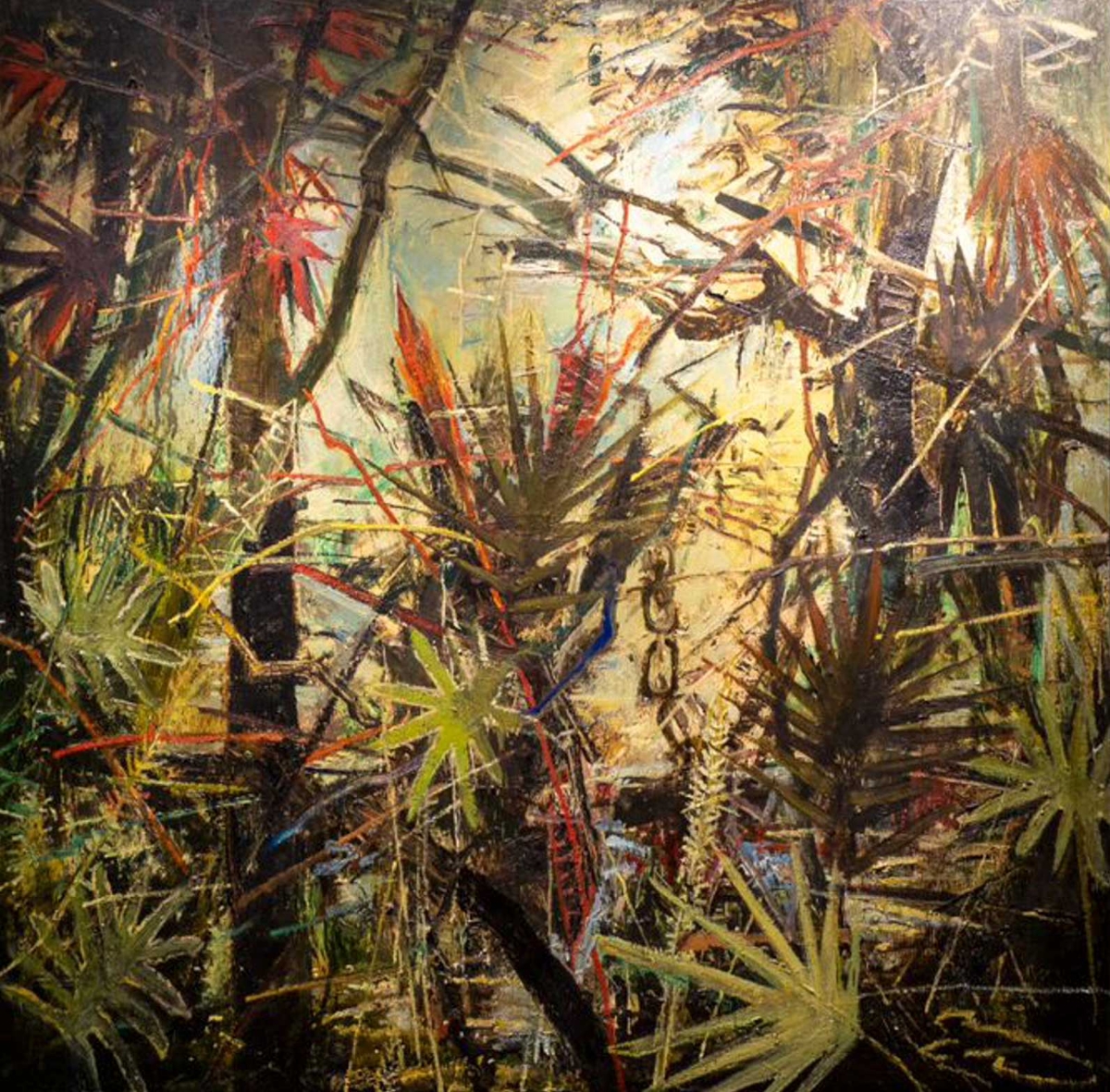
Amazonas
Year: 1987Medium: Oil on Canvas
Location: Rudy Williams Bldg., John Gray Center Hallway
This painting, originally titled Green Landscape, was later changed to Amazonas, which means Amazon in Spanish. Either name is fitting for an image with such a tropical feel, yet a reference to the Amazon brings to mind a more untamed and treacherous setting. The palm branches in various shades of green and red create a sense of a dense, impenetrable jungle. Though beautiful, the scene is anything but calm with slashes of brilliant color splayed across the surface – reds, yellows, blues, blacks. The angles, lines and colors keep the viewer’s eye roving restlessly around the canvas. Barely visible in the center right is a linked chain attached to a hidden shape, perhaps a box or treasure chest nestled within the undergrowth.
LU alumnus John Alexander talks about what inspires his art, some of his art work that is at Lamar University, and about his time as a student.



